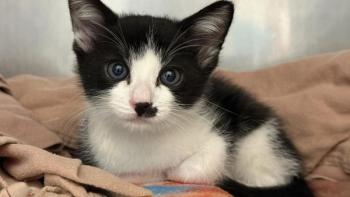
Say goodbye to dental
Why you and your team need to adopt a new term-COHAT-to encompass all the facets of regular dental care.
Dental work, dental prophylaxis and dental cleaning all make sense grammatically. Dental is an adjective that means of or relating to the teeth. Used by itself, it has no meaning, but the term dental has evolved to become a professionally embarrassing moniker placed on a multifaceted procedure commonly performed in veterinary hospitals for patients with oral disease.
The proper and accepted description is now comprehensive oral health assessment and treatment, abbreviated COHAT. This term, discussed in a stepwise fashion below, accurately describes the multistep process from admission to discharge for a patient that is presented for evaluation of plaque, gingivitis, calculus, periodontal disease or other oral disease.
The proper approach to COHAT
No. 1: A thorough patient history and signalment are obtained, including an assessment of home care and chewing habits.
No. 2: A thorough general physical examination and complete awake oral examination are performed.
The importance of a thorough oral examination is demonstrated here in this anesthetized patient. Can you see the pathology in this patient's mouth?
No. 2 (continued)
Careful examination reveals a fractured right maxillary fourth premolar (108) (black arrow) and a draining tract (white arrow) mesial to the fractured tooth apical to the mucogingival line. This is a predictable indication of endodontic disease associated with the fractured premolar. Radiographs confirmed this suspicion.
No. 3: Preanesthetic diagnostic tests, including a complete blood count, a serum chemistry profile and a urinalysis, are performed. Other tests may be required based on a pet's health status and age.
No. 4: A preanesthetic and analgesic plan is determined. Special consideration should be given to patients with chronic dental pain. Common practice includes continuous-rate infusion (CRI) loading doses of an opioid and ketamine with or without lidocaine, followed by an intravenous CRI of all three drugs before, during and after the procedure.
No. 5: Preanesthetic agents are administered and anesthesia is induced along with the placement of an endotracheal tube and maintenance of anesthesia with an anesthetic gas.
No. 6: The three members of the dentistry team-the doctor, the dental technician and an anesthesia technician-constantly monitor the patient.
The dental and anesthesia technicians are essential components of the dental team.
No. 7: The patient is comprehensively monitored-blood oxygen saturation, end-tidal carbon dioxide, electrocardiography, respiration monitors, blood pressure and temperature.
No. 8: External warming is instituted with Bair Huggers (Arizant Healthcare), warm-water circulated blankets and warmed fluids.
No. 9: The patient undergoes a complete intraoral assessment with visual assessment, including entire-mouth digital dental radiography, periodontal probing and charting. The most important among these is dental radiography.
This view of the right mandibular arcade shows no obvious gross pathology.
No. 9 (continued)
Radiographs of the right mandibular arcade in the same patient show severe marginal bone loss adjacent to the right mandibular first molar (409) (black arrow) and marked periapical bone destruction surrounding 409 and the adjacent fourth premolar (408) (white arrows).
No. 10: Complete scaling and polishing is performed above and below the gum line. Below the gum line is paramount and cannot be performed without anesthesia.
No. 11: A treatment plan is formulated based on what is detected during intraoral assessment and is communicated to the pet parent by phone.
No. 12: If surgical treatment is needed, oral nerve blocks are administered to allow the patient to stay very light under anesthesia and allow it to wake up and remain pain-free for up to six to 10 hours postoperatively.
Oral nerve blocks are essential for patient safety intraoperatively (due to lessening the dosage of anesthetics needed) and patient comfort postoperatively.
No. 13: A veterinarian well-skilled in oral surgery and dental radiographic interpretation performs treatment, assisted by a dental technician, while the patient is monitored by the anesthesia technician to ensure timely progression through the procedure, minimizing anesthesia time. Periodontal flap-based surgical extractions are the most common procedures, allowing all diseased tissue and bone to be removed and sutured over the extraction site. Tooth extraction without gum flaps does little to nothing to benefit the patient if all of the disease surrounding the tooth is left. Other procedures may be recommended to save teeth by using advanced guided tissue regeneration techniques and endodontic and restorative therapy.
Periodontal flaps performed by a skilled surgeon ensure that all diseased tissue and bone are removed at an extraction site.
No. 14: Upon completion of the procedure, the patient's oral cavity is thoroughly flushed, followed by a quick and uneventful recovery. Preanesthetic medications and analgesics combined with nerve blocks aid in a rapid recovery by allowing the patient to stay at near waking levels during the procedure. Pet parents are called to inform them that the pet is comfortable once awake.
No. 15: Postoperative medications and instructions, home care, contact numbers and recheck information are discussed thoroughly at the discharge appointment.
Conclusion
The term dental is no longer an acceptable. A great number of components involved in the COHAT make it a valuable high-end service, and it rightly deserves a more fitting title.
Newsletter
From exam room tips to practice management insights, get trusted veterinary news delivered straight to your inbox—subscribe to dvm360.






